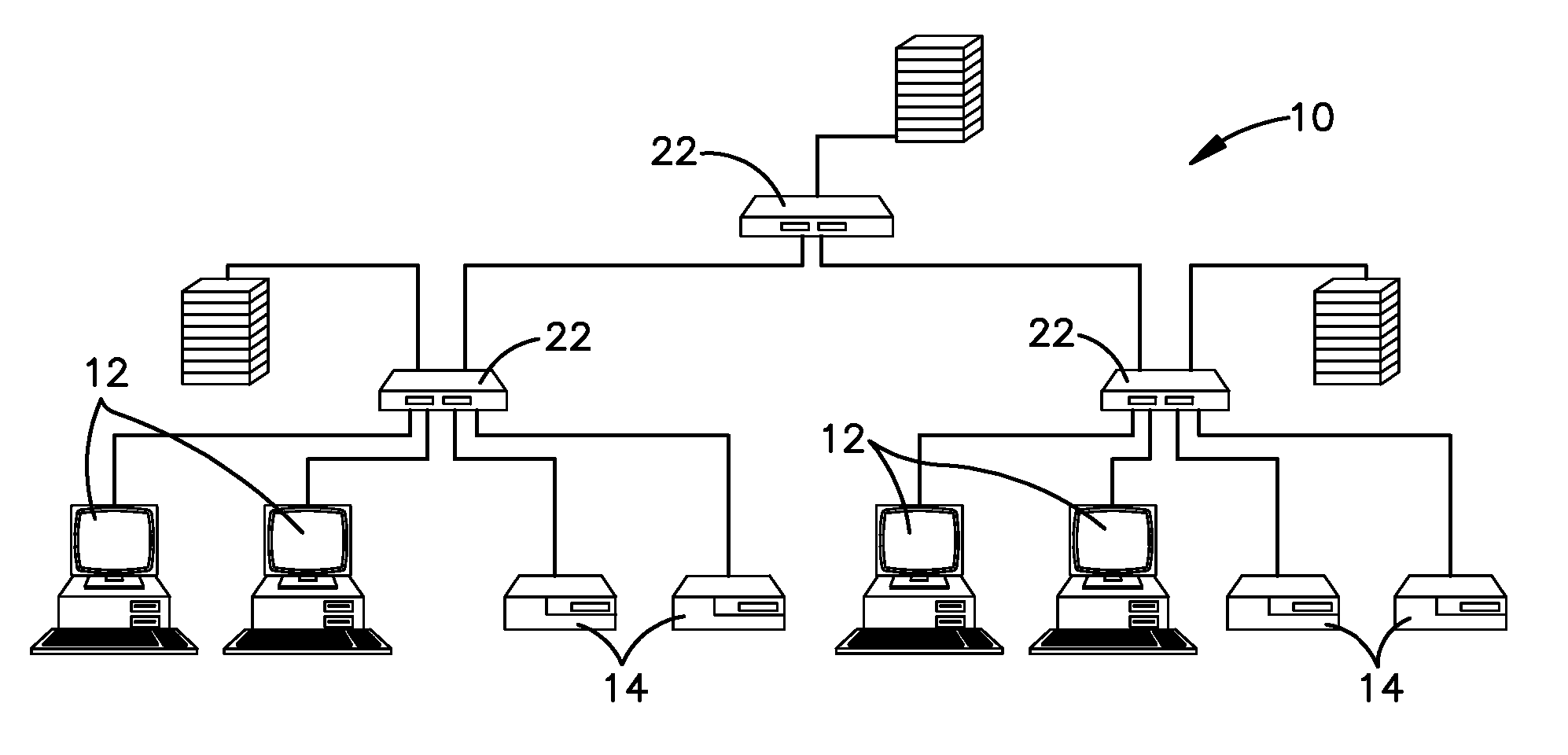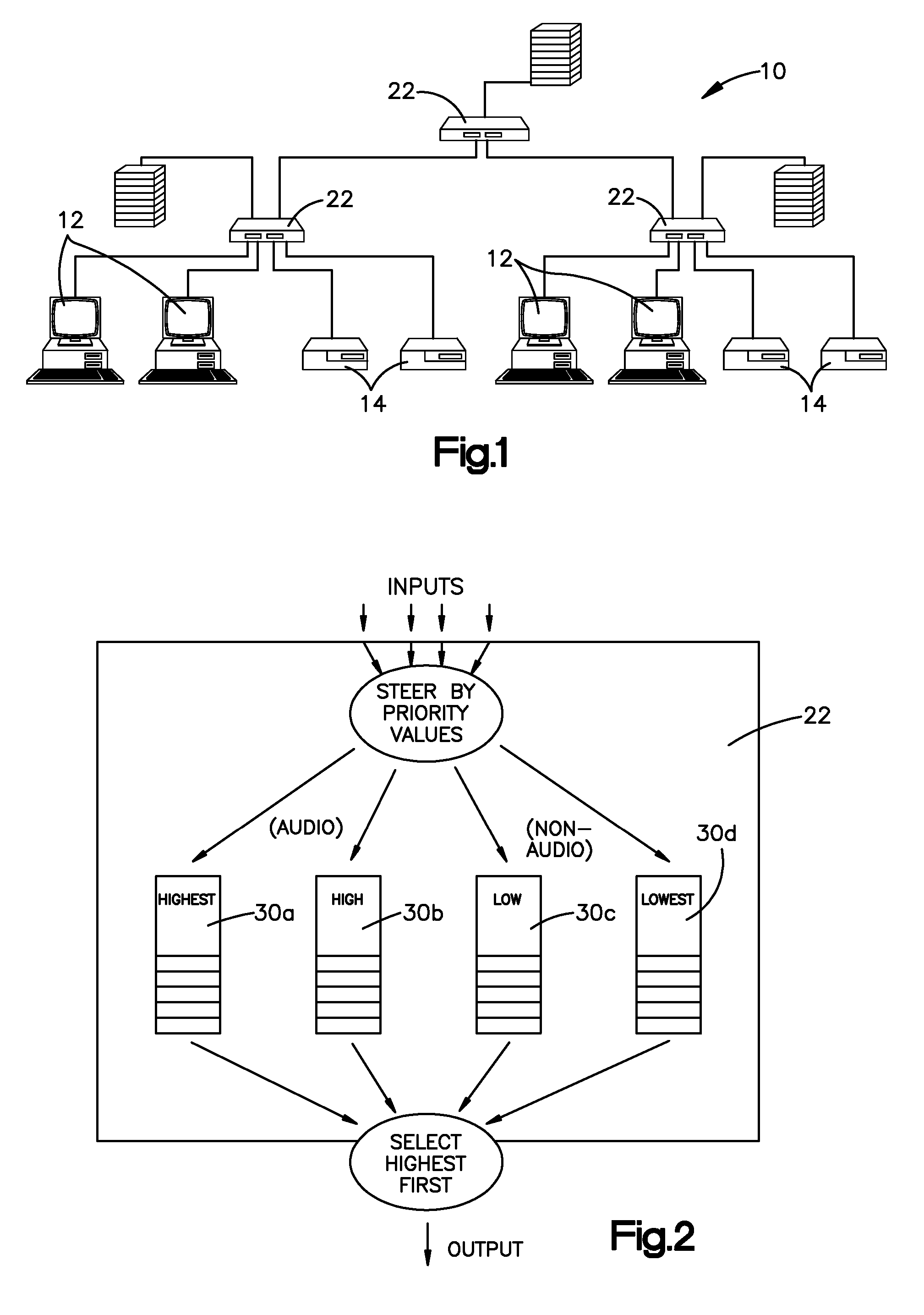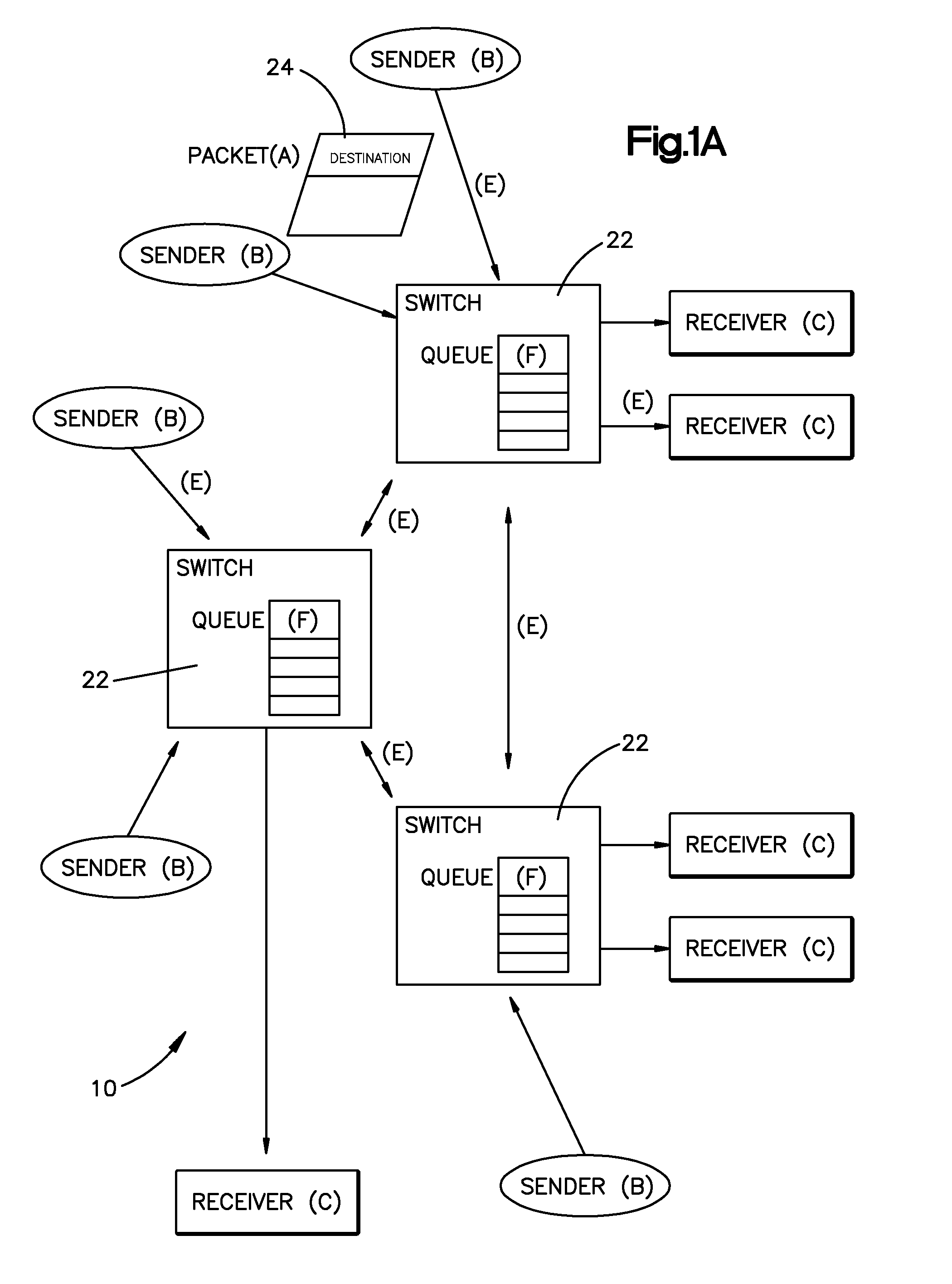Low Latency Digital Audio over Packet Switched Networks
a packet switched network and low latency technology, applied in the field of digital audio, can solve the problems of cobranet not efficiently using switched ethernet and data is naturally burs
- Summary
- Abstract
- Description
- Claims
- Application Information
AI Technical Summary
Problems solved by technology
Method used
Image
Examples
Embodiment Construction
[0036]FIG. 1 is schematic depiction of a general architecture design of a network 10 that is used at a facility having multiple computers 12 and other audio equipment 14. The network 10 uses a switched Ethernet network for delivering both audio and data to any node (such as one of the computers 12) on the network. A node need not include an entire computer but instead may simply be circuitry that includes a network interface circuit and an audio jack for plugging in a speaker, set of headphones, microphone or amplifier. FIG. 9 is a functional block diagram of a typical node on the network 10.
[0037] Key to implementing the network shown in FIG. 1 is the use of priority tagging and the action of Ethernet switches 22 (three of which are depicted in FIG. 1) that deliver higher priority packets first before any waiting lower priority (non-audio) packets. Another design point is for each channel receiver (non-switch node) to have just enough audio data buffer to allow one full size (non-...
PUM
 Login to View More
Login to View More Abstract
Description
Claims
Application Information
 Login to View More
Login to View More - R&D
- Intellectual Property
- Life Sciences
- Materials
- Tech Scout
- Unparalleled Data Quality
- Higher Quality Content
- 60% Fewer Hallucinations
Browse by: Latest US Patents, China's latest patents, Technical Efficacy Thesaurus, Application Domain, Technology Topic, Popular Technical Reports.
© 2025 PatSnap. All rights reserved.Legal|Privacy policy|Modern Slavery Act Transparency Statement|Sitemap|About US| Contact US: help@patsnap.com



